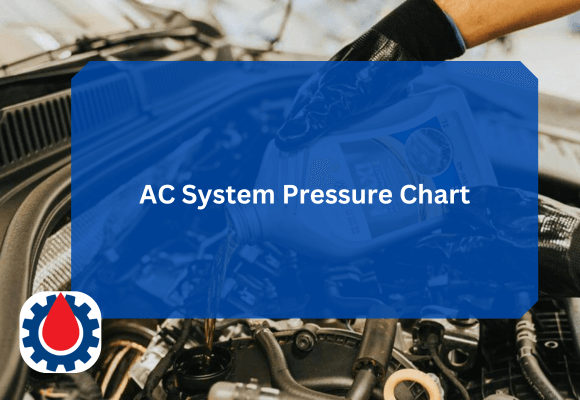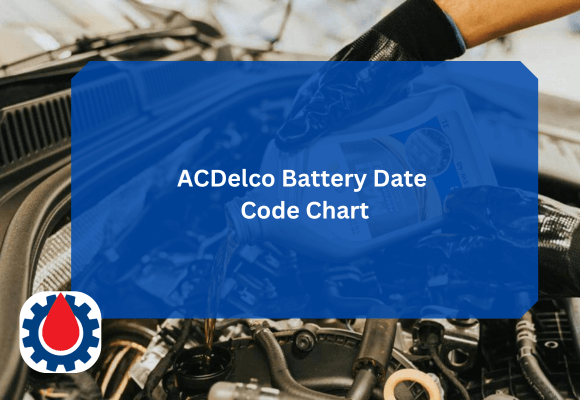The AC system pressure chart provides both the low-side (suction) and high-side (discharge) pressures for different types of refrigerants under various ambient temperatures. This ensures the system runs efficiently and prevents compressor damage or poor cooling performance.
Below, we provide a comprehensive AC system pressure chart for the most commonly used refrigerants, including R-22, R-410A, R-134a, and R-12.
AC System Pressure Chart
| Refrigerant Type | Ambient Temp (°F) | Low Side (PSI) | High Side (PSI) | Typical Application |
|---|---|---|---|---|
| R-22 | 70 | 58–70 | 145–250 | Older home air conditioners |
| 80 | 65–75 | 170–300 | ||
| 90 | 70–80 | 200–350 | ||
| 100 | 75–85 | 245–400 | ||
| 110 | 80–90 | 400–450 | ||
| R-410A | 70 | 100–125 | 300–410 | Residential & commercial AC |
| 80 | 110–135 | 350–450 | ||
| 90 | 120–140 | 400–475 | ||
| 100 | 130–150 | 450–500 | ||
| 110 | 140–160 | 500–550 | ||
| R-134a | 70 | 22–35 | 100–155 | Automotive AC systems |
| 80 | 25–40 | 150–175 | ||
| 90 | 30–45 | 175–200 | ||
| 100 | 35–50 | 200–250 | ||
| 110 | 40–50 | 250–300 | ||
| R-12 | 70 | 25–30 | 140–160 | Older car AC units |
| 80 | 30–35 | 160–180 | ||
| 90 | 35–40 | 180–200 | ||
| 100 | 40–45 | 200–230 | ||
| 110 | 45–50 | 230–260 | ||
| R-407C | 70 | 60–65 | 220–250 | Retrofit for R-22 systems |
| 80 | 68–73 | 250–290 | ||
| 90 | 75–80 | 275–325 | ||
| 100 | 80–85 | 300–350 | ||
| 110 | 85–90 | 350–400 | ||
| R-32 | 70 | 105–115 | 340–380 | Inverter & split AC units |
| 80 | 115–125 | 380–420 | ||
| 90 | 120–135 | 400–450 | ||
| 100 | 130–145 | 430–480 | ||
| 110 | 140–155 | 460–510 | ||
| R-600a (Isobutane) | 70 | 15–20 | 100–115 | Domestic refrigerators |
| 80 | 20–25 | 120–135 | ||
| 90 | 25–30 | 135–150 | ||
| 100 | 30–35 | 150–165 | ||
| 110 | 35–40 | 165–180 | ||
| R-290 (Propane) | 70 | 45–55 | 150–175 | Commercial refrigeration |
| 80 | 50–60 | 175–200 | ||
| 90 | 55–65 | 200–225 | ||
| 100 | 60–70 | 225–250 | ||
| 110 | 65–75 | 250–275 | ||
| R-1234yf | 70 | 20–30 | 135–155 | Modern automotive systems |
| 80 | 25–35 | 150–175 | ||
| 90 | 30–40 | 175–200 | ||
| 100 | 35–45 | 200–225 | ||
| 110 | 40–50 | 225–250 | ||
| R-404A | 70 | 45–55 | 210–240 | Commercial refrigeration |
| 80 | 50–60 | 250–280 | ||
| 90 | 55–65 | 290–320 | ||
| 100 | 60–70 | 325–360 | ||
| 110 | 65–75 | 360–400 | ||
| R-507A | 70 | 50–55 | 220–250 | Low-temperature freezers |
| 80 | 55–60 | 260–290 | ||
| 90 | 60–65 | 300–340 | ||
| 100 | 65–70 | 340–380 | ||
| 110 | 70–75 | 380–420 | ||
| R-717 (Ammonia) | 70 | 20–30 | 125–150 | Industrial refrigeration |
| 80 | 25–35 | 150–180 | ||
| 90 | 30–40 | 175–210 | ||
| 100 | 35–45 | 200–240 | ||
| 110 | 40–50 | 240–270 | ||
| R-744 (CO₂) | 70 | 400–450 | 1000–1200 | CO₂ cascade & commercial systems |
| 80 | 450–500 | 1200–1400 | ||
| 90 | 500–550 | 1400–1600 | ||
| 100 | 550–600 | 1600–1800 | ||
| 110 | 600–650 | 1800–2000 | ||
| R-123 | 70 | 15–20 | 100–120 | Centrifugal chillers |
| 80 | 18–22 | 115–135 | ||
| 90 | 20–25 | 130–150 | ||
| 100 | 22–28 | 145–165 | ||
| 110 | 25–30 | 165–185 | ||
| R-717/R-22 Mix | 70 | 40–50 | 160–180 | Industrial hybrid systems |
| 80 | 45–55 | 190–210 | ||
| 90 | 50–60 | 220–240 | ||
| 100 | 55–65 | 250–270 | ||
| 110 | 60–70 | 270–290 | ||
| R-502 | 70 | 45–50 | 220–240 | Commercial & transport refrigeration |
| 80 | 50–55 | 250–280 | ||
| 90 | 55–60 | 280–320 | ||
| 100 | 60–65 | 320–350 | ||
| 110 | 65–70 | 350–390 | ||
| R-152a | 70 | 25–30 | 130–145 | Automotive & light cooling |
| 80 | 30–35 | 150–165 | ||
| 90 | 35–40 | 170–185 | ||
| 100 | 40–45 | 190–210 | ||
| 110 | 45–50 | 210–230 |
Related Normal Oil Pressure for Diesel Engines(Norma Pressure Range)
How to Use the AC System Pressure Chart
When checking or charging an AC system, follow these simple steps:
1. Connect gauges:
Attach the blue gauge to the low side (suction) and the red gauge to the high side (discharge).
2. Measure ambient temperature:
Use a thermometer to check the temperature near the condenser unit.
3. Compare readings:
Refer to the chart above and ensure your pressure readings align with the correct refrigerant and temperature range.
4. Diagnose issues:
- Low pressure on both sides → Low refrigerant or restriction.
- High pressure on both sides → Overcharge or dirty condenser.
- Low suction, high discharge → Blocked expansion valve or restricted orifice tube.
Related Low Engine Oil Pressure(8 Common Causes & Solutions)
Understanding AC System Pressure Readings
Before diving into the chart, let’s clarify what these pressures mean:
- Low-side pressure (Suction Pressure):
- This is the pressure on the evaporator or suction side of the system. It reflects how efficiently the refrigerant is absorbing heat inside the evaporator coil.
- High-side pressure (Discharge Pressure):
- This is the pressure on the condenser or discharge side, representing how well the refrigerant releases heat outside.
- Ambient temperature:
- The temperature outside or surrounding the AC condenser unit affects the pressure readings.
Proper refrigerant charging depends heavily on maintaining the correct balance between these pressures.
Related Engine Oil Pressure Control Circuit Stuck On(6 Causes + Solutions)
Common AC Pressure Problems and What They Mean
| Pressure Reading | Possible Cause | Effect on System |
|---|---|---|
| Low both sides | Low refrigerant charge | Poor cooling, compressor may short cycle |
| High both sides | Overcharge, dirty condenser | Overheating, poor cooling, compressor strain |
| Low suction / high discharge | Restriction in the system | Reduced cooling, possible compressor failure |
| High suction / low discharge | Faulty compressor valves | Loss of cooling capacity |
| Fluctuating pressure | Moisture or air in system | Inconsistent cooling, noise, and wear |
Tips for Accurate Pressure Readings
1. Use the right refrigerant identifier:
Make sure you know which refrigerant your system uses before connecting gauges.
2. Allow system stabilization:
Let the AC run for 10–15 minutes before checking pressures.
3. Avoid direct sunlight:
High radiant heat can affect gauge readings.
4. Clean condenser coils:
Dirty coils increase high-side pressure readings, causing false diagnostics.
5. Use quality gauges:
Inaccurate gauges can lead to incorrect pressure interpretation.
Related Is Oil Pressure Higher When Cold(Is Your Engine at Risk?)
Why AC System Pressures Matter
Maintaining the correct pressure balance ensures:
- Efficient cooling performance
- Energy savings
- Extended compressor life
- Reduced maintenance costs
Incorrect pressures can lead to system inefficiencies, excessive energy use, or complete compressor failure, one of the most expensive AC repairs.
FAQs
What is the normal pressure for an AC system?
The normal pressure for most AC systems depends on the refrigerant type and ambient temperature. Generally, low-side pressure ranges between 30–40 PSI, and high-side pressure ranges between 150–250 PSI for systems using R-22 or R-134a. Modern R-410A systems operate at higher pressures, typically 110–140 PSI (low side) and 400–500 PSI (high side).
What should the pressure be on a 134a system?
For an R-134a system, the low-side pressure should be around 25–45 PSI, while the high-side pressure usually falls between 175–225 PSI under normal operating conditions at ambient temperatures between 80°F and 100°F. Always check both sides while the compressor is running for accurate readings.
What happens if my AC pressure is too high?
If AC pressure is too high, it indicates overcharging, restricted airflow, or a clogged condenser. Excessive pressure can cause the compressor to overheat, shut off, or even fail completely. It may also lead to poor cooling performance and increased energy consumption.
What AC pressures indicate a problem?
- Low both sides: Low refrigerant or system leak.
- High both sides: Overcharged system or dirty condenser coil.
- Low suction, high discharge: Restricted expansion valve or blockage.
- High suction, low discharge: Faulty compressor valves.
- Unbalanced readings always suggest that the system needs further diagnosis.
How to check AC pressure level?
To check AC pressure:
- Connect manifold gauges, blue to the low side and red to the high side.
- Run the AC system for 10–15 minutes.
- Compare the readings with an AC pressure chart for the correct refrigerant type and temperature.
- Ensure the readings fall within the expected range for your refrigerant (e.g., R-22, R-410A, or R-134a).
How much pressure should be there in 1.5 ton AC?
A 1.5-ton split AC using R-410A refrigerant typically operates at around 110–130 PSI on the low side and 400–450 PSI on the high side at 85°F ambient temperature. For R-22 systems, expect 60–70 PSI (low) and 200–250 PSI (high). These values can slightly vary depending on humidity, coil cleanliness, and ambient conditions.




